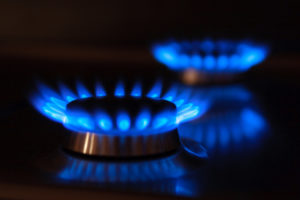 Natural gas fell on Monday as weather forecasts saw no significant changes over the weekend, calling for a very warm start to the week for almost the entire US, before cooler Canadian weather systems track across the border late in the week to push readings to near normal across much of the country.
Natural gas fell on Monday as weather forecasts saw no significant changes over the weekend, calling for a very warm start to the week for almost the entire US, before cooler Canadian weather systems track across the border late in the week to push readings to near normal across much of the country.
Natural gas for delivery in July traded 2.38% lower at $2.749 per million British thermal units at 08:08 GMT, shifting in a daily range between $2.753 and $2.729. The contract rose 1.4% on Friday to $2.816, reversing two days of losses, to settle the week 2.4% higher.
Last weeks inventory data by the Energy Information Administration came in skewed to the bullish side as the reported build was below analysts projections and barely exceeded the five-year average. This, however, failed to push natural gas prices up as sentiment past the short term was focused on the arrival of cooler Canadian systems.
Before that, very warm to hot temperatures will dominate the entire US early this week, NatGasWeather.com said, except for the far northern regions. This will drive the strongest cooling demand for the year so far, particularly on Monday and Tuesday, as widespread highs in the 90s and 100s, combined with high humidity, will push the Heat Index to around 110 degrees Fahrenheit over the South and Southeast. The North will see temperatures peak in the mid-upper 80s, apart from the the upper Great Lakes and interior Northeast.
Nationwide natural gas demand will be very high compared to normal through Tuesday, but more importantly, it will ease to moderate afterwards as high pressure gives way to Canadian weather systems on Friday going into next week. Cooler conditions, coupled with showers, will drop temperatures considerably over the Midwest and East, while cooler air also spills into the Southeast. The West, however, will continue to experience widespread highs in the 90s and 100s, remaining a source for strong cooling demand.
Additional Canadian weather systems are anticipated to track across the central and eastern US in the last week of June going into July, carrying below-normal temperatures, showers and thunderstorms. Florida and portions of the Southeast Coast will be the only regions of the eastern half of the US that will be warmer than usual, significantly easing cooling demand, while the West remains very warm to hot. High pressure might try to strengthen again over the East and North as the first week of July ends, but it remains yet unclear how that pattern will evolve.
Inventories
This weeks inventory report is expected to come in below the average as lower supply due to maintenance offset a cooling that tropical storm Bill brought last week and Canadian weather systems tracking across the North. Early estimates point to a build of around 77 bcf for the week ended June 19th, compared to the five-year average gain of 86 bcf and the year-ago one of 110 bcf.
The following report, due out on July 2nd, will also likely reflect a smaller-than-average inventory increase due to very high cooling demand early this week. The EIA is expected to report a build of little over 70 bcf for the seven days ended June 26th, compared to the average of 75 bcf and a gain of 102 bcf during last years comparable period.
The build after, however, will likely rise back to well above the average as cooler weather across the eastern half of the US in late June and early July gets factored in, while supply recovers. The five-year average build for the week ended July 3rd is 75 bcf, while stockpiles jumped by 94 bcf a year earlier.
Readings
According to AccuWeather.com, temperatures in New York will peak at 92 degrees Fahrenheit on June 23rd, 11 above normal, before easing back to the lower 80s and mid 70s through July 4th. The high in Chicago today will be 89 degrees Fahrenheit, 7 above usual, followed by a drop to as low as 73 degrees on June 26th.
Down South, readings in Houston will max out at 90-92 degrees through June 27th, compared to the average 91, before easing to the mid-upper 80s through July 4th. To the West, Sacramento will peak at 92 degrees on Tuesday and Wednesday, 3 above normal, before surging to 100 degrees on June 26th, with highs set to remain in the mid-upper 90s through the first week of July.
Pivot points
According to Binary Tribune’s daily analysis, July natural gas futures’ central pivot point stands at $2.797. In case the contract penetrates the first resistance level at $2.856 per million British thermal units, it will encounter next resistance at $2.895. If breached, upside movement may attempt to advance to $2.954 per mBtu.
If the energy source drops below its S1 level at $2.758 per mBtu, it will next see support at $2.699. In case the second key support zone is breached, the power-station fuel’s downward movement may extend to $2.660 per mBtu.
In weekly terms, the central pivot point is at $2.837. The three key resistance levels are as follows: R1 – $2.934, R2 – $3.053, R3 – $3.150. The three key support levels are: S1 – $2.718, S2 – $2.621, S3 – $2.502.





